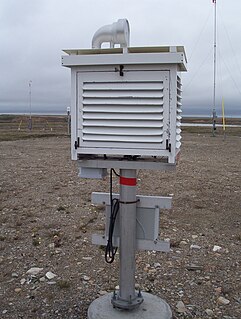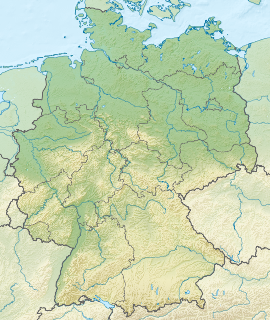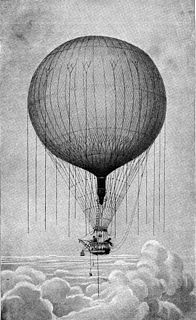
Wilhelm Lambrecht (3 August 1834, Wolbrechtshausen – 17 June 1904, Göttingen) was a German builder of measuring instruments.

Wolbrechtshausen is a part of the municipality Nörten-Hardenberg in the district of Northeim in Lower Saxony.

Göttingen is a university city in Lower Saxony, Germany, the capital of the eponymous district. It is run through by River Leine. At the start of 2017, the population was 134,212.
After doing his exams Lambrecht began a five-year apprenticeship as a mechanic in Einbeck. The handling of the measuring instruments which were, despite their heaviness, less robust and built quite complicated and bulky at this time, sparked Lambrecht’s interest in instrument building and revealed his special talent during his apprenticeship. In the following five years of his journeyman's travel he worked in well-known factories in Paris and Berlin, then went back to Einbeck and went into business for himself. In 1864 he went to Göttingen, opened a factory and soon met the chemist Friedrich Wöhler and the physician L. Weber.

Einbeck is a town in the district Northeim, in southern Lower Saxony, Germany. It is located on the German Timber-Frame Road.

Friedrich Wöhler was a German chemist, best known for his synthesis of urea, but also the first to isolate several chemical elements.
In 1867, when he came back from the world exhibition in Paris and brought the first chromic acid cell with him, he also met the astronomer Wilhelm Klinkerfues. Klinkerfues had developed a bifilar-hygrometer which was widely used but did not prove in laymen's hands. After that Lambrecht built a hair hygrometer, "Model Klinkerfues". In 1873, after separation from Klinkerfues, Lambrecht started to build new meteorological instruments such as polymeters, dew point monitors, and aspiration psychrometers. His weather telegraphs, weather columns and combinations of different meteorological instruments were in use at several bigger cities and foreign health resorts before World War I. Lambrecht also built medical thermometers. At the same time he developed the so-called minimum thermometer with a narrowing of the lumen of the capillary which is placed above the mercury container. His precision instruments are well-known all over the world. [1] [2]

The Chromic acid cell was a type of primary cell which used chromic acid as a depolarizer. The chromic acid was usually made by acidifying a solution of potassium dichromate. The old name for potassium dichromate was potassium bichromate and the cell was often called a Bichromate cell. This type of cell is now only of historical interest.

A hygrometer is an instrument used to measure the amount of humidity and water vapor in the atmosphere, in soil, or in confined spaces. Humidity measurement instruments usually rely on measurements of some other quantity such as temperature, pressure, mass, a mechanical or electrical change in a substance as moisture is absorbed. By calibration and calculation, these measured quantities can lead to a measurement of humidity. Modern electronic devices use temperature of condensation, or changes in electrical capacitance or resistance to measure humidity differences. The first crude hygrometer was invented by the Italian Renaissance polymath Leonardo da Vinci in 1480 and a more modern version was created by Swiss polymath Johann Heinrich Lambert in 1755. Later in the year 1783, Swiss physicist and Geologist, Horace Benedict De Saussure invented the first hygrometer using human hair to measure humidity.
- 24 July 1859: foundation of a fine mechanical factory in Einbeck
- 1867: invention of thermo-hygroscope (combination hair hygrometer and bimetal)
- 1875: invention of table hygrometer
- 1876: invention of standard barometer
- 1877: invention of polymeter
















